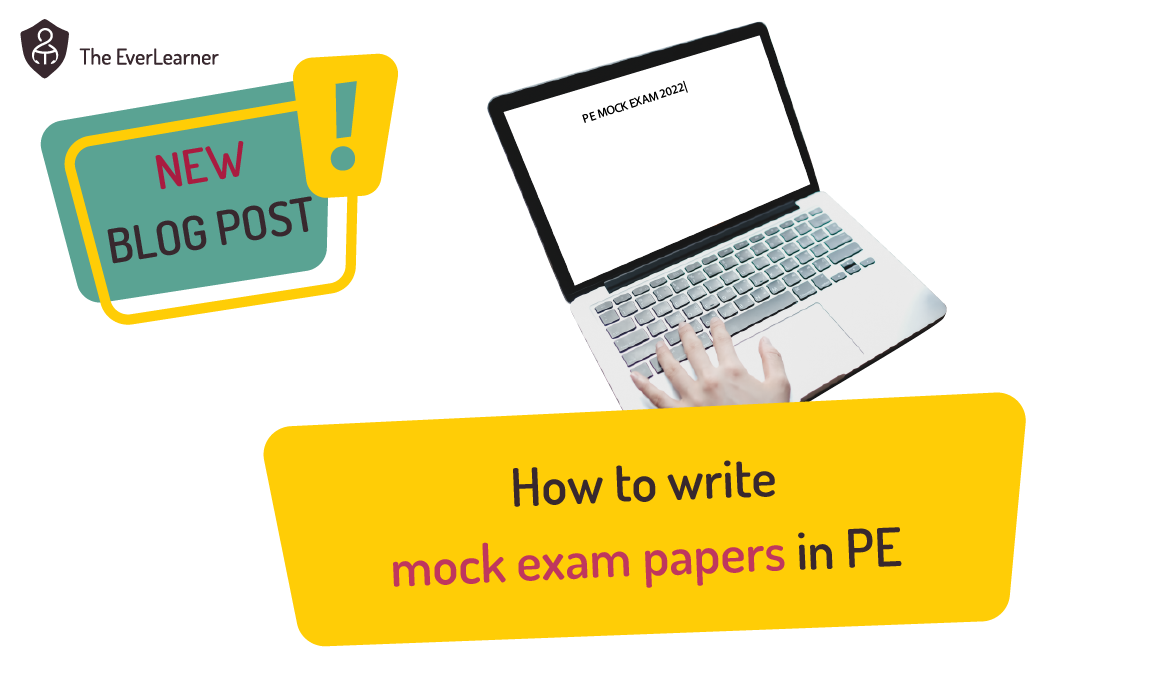Advance Exam Information in OCR Linear GCE (A-level) PE: Where do we go from here?
In a rush? Jump to the specific question/section.
➚ Q: What guidance has been published for PE?
➚ Q: What are the implications for my classroom teaching?
➚ Q: What is the specific guidance from OCR for A-level PE?
➚ Q: What are James's recommendations for OCR A-level PE Paper 1?
➚ Q: What are James's recommendations for OCR A-level PE Paper 2?
➚ Q: What are James's recommendations for OCR A-level PE Paper 3?
➚ Enquire about exam-board-specific revision events with James
Q: What guidance has been published for PE?
On Monday 7th February 2022, all exam boards published their advance exam information for PE and Sport courses examined in summer 2022. The aim of this guidance can be viewed here:
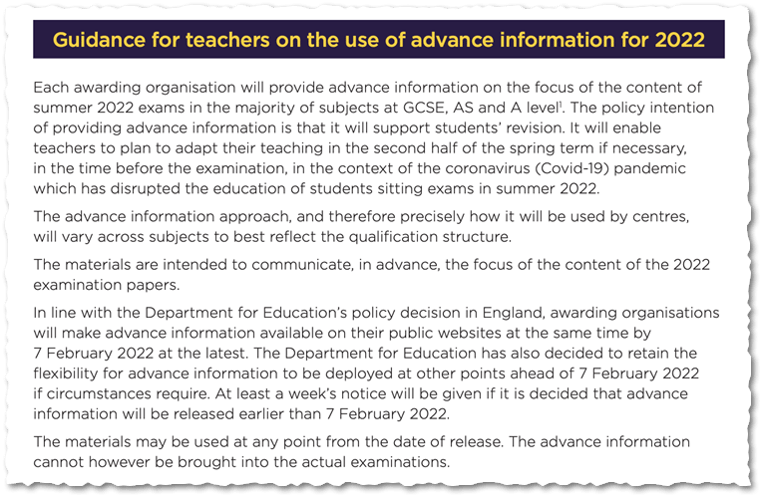 Extract taken from JCQ’s publication: Advance Information for Ofqual Regulated General Qualifications (Summer 2022)
Extract taken from JCQ’s publication: Advance Information for Ofqual Regulated General Qualifications (Summer 2022)
JCQ have guided the exam boards to provide information that does not jeopardise these principles:
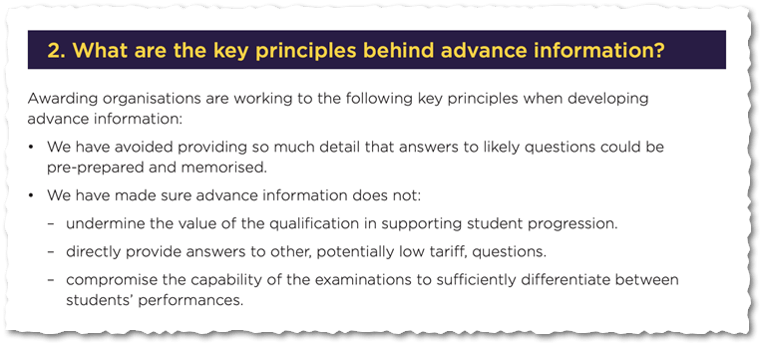
So, with these principles in mind, teachers and students received the advance exam information and what follows is aimed at achieving three things:
1. Establishing core educational principles by which teachers should use the advance information.
2. Interpreting each batch of advance exam information.
3. Making recommendations on each batch of advance exam information (covering all major courses).
Q: So, what are the implications for my classroom teaching?
It is vital that core educational principles must be applied by teachers when using the AEI:
1. Students have the right to learn all knowledge and skills relating to a course.
2. The AEI provides relevant context by which specific content and skills can be honed.
3. Students need to be guided to prepare all specification knowledge and skills.
Q: What is the specific guidance from OCR for A-level PE?
First of all, it is vital that you view the full guidance from OCR here.
This is our summary of the listed content:
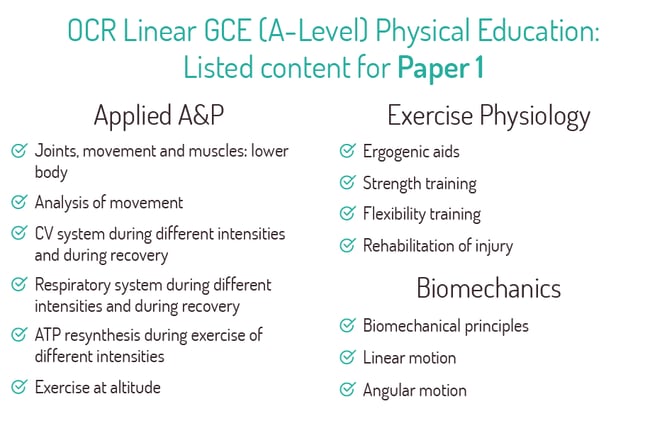
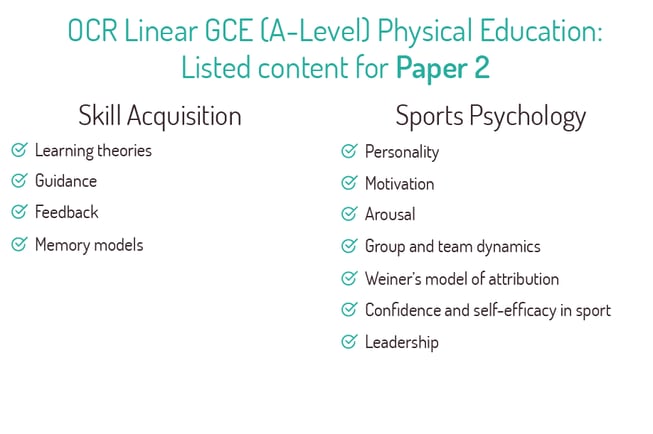
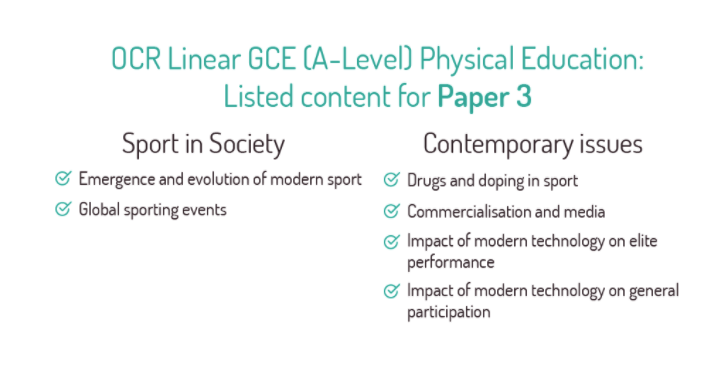
Q: What are James's recommendations for OCR A-level PE Paper 1?
My top 5 recommendations for OCR A-level PE Paper 1
🔑 Recommendation 1: Overlearn the anatomy and the movement analysis of the lower body but be careful not to ignore the upper body.
The AEI clearly states that joints, movement and muscles knowledge of the lower body is going to be tested and we need to hone this knowledge. Students tend to perform better with knowledge of the knee and ankle compared to the hip. Ensure that your students clearly understand hip flexion and extension as well as rotation at the hip. Combine this knowledge with challenging movement analysis examples including those where eccentric and isometric contractions of the agonist are in evidence. Here are some examples taken from our ExamSimulator software:
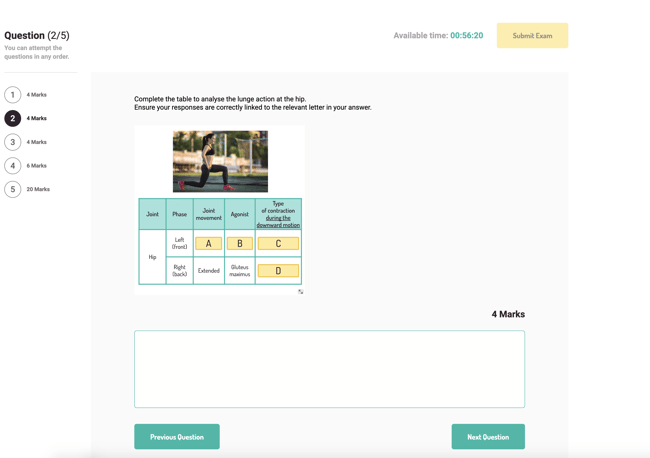

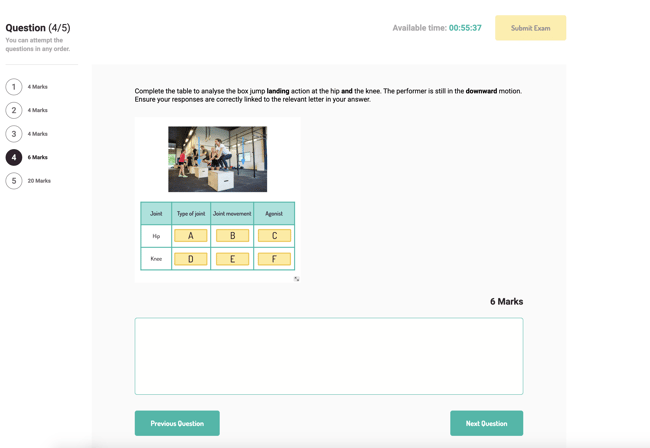
It is also important not to ignore the upper body. The lower body is specific for joints, movement and muscles but is not specified for “Analysis of movement”. Therefore, OCR could legitimately ask a movement analysis question of the shoulder. I consider this to be less likely but it is our duty to prepare students for this.
🔑 Recommendation 2: Teach your students to be able recognise questions of different types of performance in relation to the CV and respiratory systems.
Students must be able to answer CV and respiratory questions that relate to any of the following:- Resting conditions
- Submaximal exercise
- Maximal exercise
- Recovery from exercise
Take for example cardiac volumes… students must know resting, submax, max and recovery volumes for stroke volume, heart rate and cardiac output. They must also be able to recognise which type of exercise is being requested. For example, a question might include a statement such as “...after the finish line…” or “...prior to a race…” or “...during a 400m race…”. Students need to be able recognise that these phrases refer to recovery, rest and maximal respectively. Anything short of this will underprepare a student to perform well in these questions.
🔑 Recommendation 3: Develop the “evaluate” (and “justify”) skill through the ergogenic aids topic.
Evaluating is a core requirement of Paper 1: This image shows the contribution of the “evaluate” skill, on average on paper 1 for OCR A-level. Ergogenic aids are a wonderful area to develop evaluation because each aid/method is made up of:
This image shows the contribution of the “evaluate” skill, on average on paper 1 for OCR A-level. Ergogenic aids are a wonderful area to develop evaluation because each aid/method is made up of:
- Description
- Type of athlete
- Positive impact
- Negative impact
This then allows the student an excellent opportunity to evaluate with bitesize chunks of content.
🔑 Recommendation 4: Make your students rock stars at biomechanics!
Since 2006, I have been using the biomechanics skills within A-level PE to differentiate my students and my centre from others. I need to explain this a little bit more: previously, biomechanics was an option in A2 PE and most centres elected for sports psychology instead of biomechanics, failing to realise that biomechanics is, by far, the most accessible content on the A-level courses. This allowed my students and my centre to maximise exam performance and achieve better in terms of attainment and added value. This year, I expect that we will once again see biomechanics be the lowest performing raw mark section of any of the three exams. In other words, if your students nail the biomechanics, your centre is more likely to perform well overall in comparison to other centres on average. The three listed topics of Principles, Linear and Angular motion are quite substantial but are deliverable in a two-hour session. If you are not confident in delivering this, please get in touch. I would be proud to deliver the perfect session of biomechanics to your students.🔑 Recommendation 5: Be cautious to not ignore recovery when preparing the Energy systems and Strength training knowledge.
Recovery is not mentioned in the AEI but recovery is a fundamental principle when it comes to understanding energy systems and also strength training. Both of these topics are referenced on the AEI. For example, your students may not be asked for the physiological processes of the alactacid component of EPOC but may well required a knowledge of the alactacid component of EPOC when describing a max-strength training-weights session. These nuances (of interleaving understanding) are crucial and it is in these areas that your teaching can mark out your students and your centre for success.Q: What are James's recommendations for OCR A-level PE Paper 2?
My top 5 recommendations for OCR A-level PE Paper 2
🔑 Recommendation 1: Spend time on Learning theories: they have a major synoptic influence on other areas of the course.
In my opinion, the teaching of Learning theories in A-level PE classes is not strong on average. Examiners’ reports have highlighted this in the recent past. Students have struggled to pick up marks compared to other areas. Therefore, Learning theories is an excellent example of how and where a centre can mark itself out from the crowd. Here are sub-tips for teaching Learning theories:- Clearly differentiate between negative reinforcement and punishment when teaching operant conditioning. They are not the same. Negative reinforcement is the removal of an adverse/noxious stimulus and is used to establish a new S-R bond.
- Be brave and teach Thorndike’s laws when teaching operant conditioning. Thorndike is not explicitly mentioned on the specification but the impact of the law of effect, exercise and readiness are all over the mark scheme for both Skill acquisition and Sports psychology.
- Teach cognitive learning entirely through examples. Here’s how I might do it:
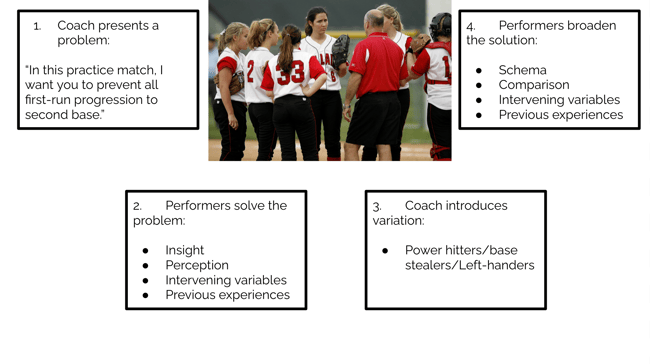 Teaching cognitive learning is tricky at the best of times and is almost entirely reliant on the AO2 skill to provide context. With operant conditioning and social learning theory, the ideas are more intuitive so can be taught as content with examples then introduced. However, cognitive learning theory requires application from the outset.
Teaching cognitive learning is tricky at the best of times and is almost entirely reliant on the AO2 skill to provide context. With operant conditioning and social learning theory, the ideas are more intuitive so can be taught as content with examples then introduced. However, cognitive learning theory requires application from the outset.
- Remember to teach the factors that influence the quality of a demonstration when teaching social learning theory. This will also support the student’s understanding of visual guidance:
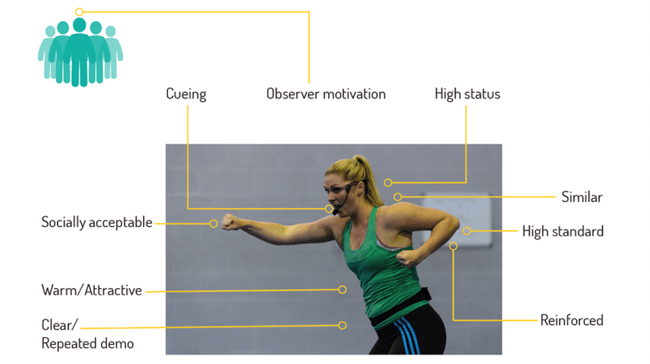
🔑 Recommendation 2: Interleave your revision of arousal with that of personality and motivation (and possibly confidence and self-efficacy too).
There is a tendency to deliver arousal in isolation from other topics. This is an error. Arousal, by definition, impinges on understanding across the sports psychology section. There are obvious examples such as the shift in inverted U or the tendency to recover or not from catastrophe but arousal relates to almost everything. Consider, for example, motivation. The balance between the importance of intrinsic and extrinsic motivation is affected by arousal. Bandura’s model of self-confidence includes emotional control (arousal) as one of the antecedents. Vealey’s model of self-efficacy incorporates both competitive orientation and subjective outcomes as central features. Both of these factors relate to arousal. Therefore, teaching/revising arousal in isolation as a discrete topic is failing to prepare students to complete OCR A-level Sport Psychology questions.
🔑 Recommendation 3: Make your students aware of the simplicity of the Chelladurai model of leadership.
In my opinion, Chelladurai multidimensional model of leadership is the most straightforward concept on the entire A-level PE course. However, students have historically performed poorly when this is questioned in exams (on the current and legacy specs). Here is the model:
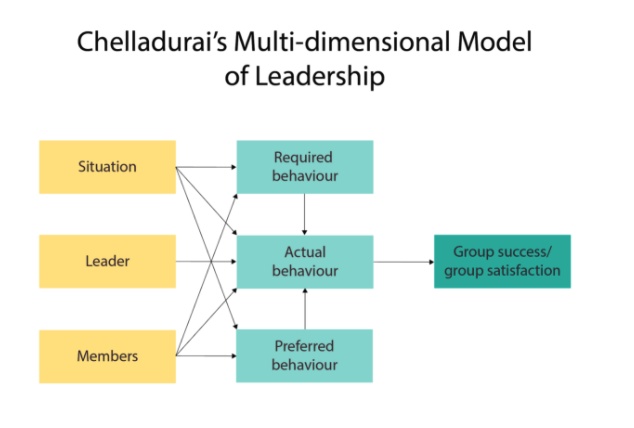 I agree that it looks complex but, once you break it down, this is the key information:
I agree that it looks complex but, once you break it down, this is the key information:
Big picture: Good leaders must be adaptable in their leadership style.
Situation: The objective sporting scenario. For example, are athletes learning a new, dangerous skill on the trampoline?
Required behaviour: The situation dictates which leadership style is most relevant. In the example above, the leader (coach/teacher) must show autocracy to keep athletes. The situation demands that spotting is not a democratic choice.
Members: These are the players, athletes or learners and they have their own experiences and personalities. For example, younger people often prefer autocratic leadership, as it provides clarity and makes them feel safe.
Preferred behaviour: This leads on from the members. In the example I have provided, the members wish to receive an autocratic style. This is their preferred leader behaviour.
Leader: This is the teacher/coach/leader as an individual and the experiences of leadership they have. For example, a PE teacher may have had great success working with school football teams and using a democratic style.
Actual behaviour: Because of who the leader is, she/he displays democracy when teaching the somersault in trampolining. It is the leader’s actual behaviour but fails to meet the required behaviour of the preferred behaviour.
Dissonance/Discord/Disharmony: In the example provided, the teacher has not adapted their leadership style and has achieved dissonance in the model. This will lead to reduced likelihood of satisfaction and success. It could also lead to a dangerous scenario.
Consonance/Accord/Harmony: By adapting the actual behaviour, the leader could bring the model into balance and the required, preferred and actual leader behaviours will all align and, in my example, be autocratic.
🔑 Recommendation 4: When revising Attribution theory, ensure that all three loci are understood.
Students need to be able to reference locus of stability, locus of causality and locus of controllability. Take a look at Weiner’s model below:
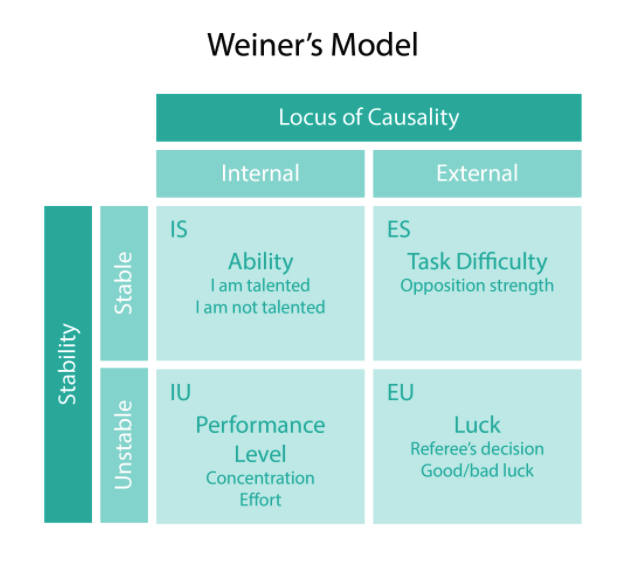 On this model, stability and causality are clearly referenced and we need to encourage students to recognise controllability. The only controllable feature of the model is the internal unstable (IU) section. Whether a performer is attributing success or failure, the controllable attribution is an internal unstable attribution. This conclusion is the one that students must reach when working with this model. Furthermore, students can link this to the tendency toward mastery orientation and learned helplessness.
On this model, stability and causality are clearly referenced and we need to encourage students to recognise controllability. The only controllable feature of the model is the internal unstable (IU) section. Whether a performer is attributing success or failure, the controllable attribution is an internal unstable attribution. This conclusion is the one that students must reach when working with this model. Furthermore, students can link this to the tendency toward mastery orientation and learned helplessness.
🔑 Recommendation 5: Don’t undervalue definitions!
As you can see from this image, definitions are a factor in Paper 2 exams.
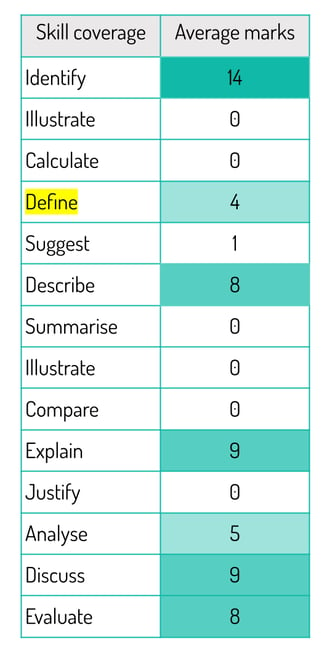 On average, there are four raw marks for defining concepts on Paper 2. Four marks is typically a component grade. Therefore, there are four marks available for being able to define things like personality, self-efficacy, vicarious experiences, intrinsic motivation, arousal, etc… Drill these definitions with students. Quizzing/retrieval practice is an excellent way of achieving this:
On average, there are four raw marks for defining concepts on Paper 2. Four marks is typically a component grade. Therefore, there are four marks available for being able to define things like personality, self-efficacy, vicarious experiences, intrinsic motivation, arousal, etc… Drill these definitions with students. Quizzing/retrieval practice is an excellent way of achieving this:
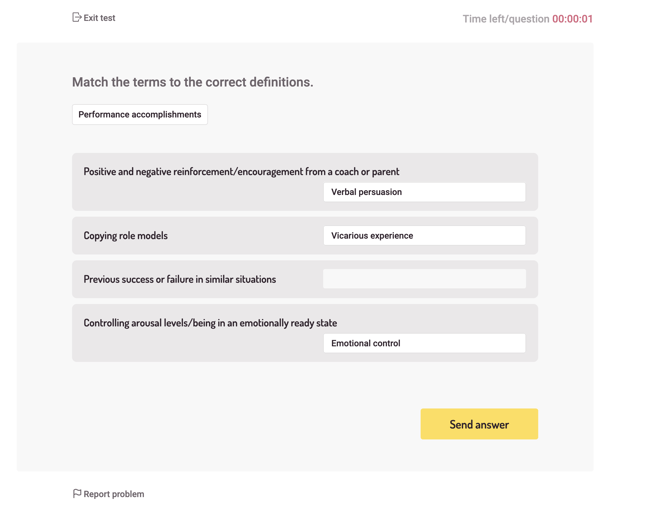
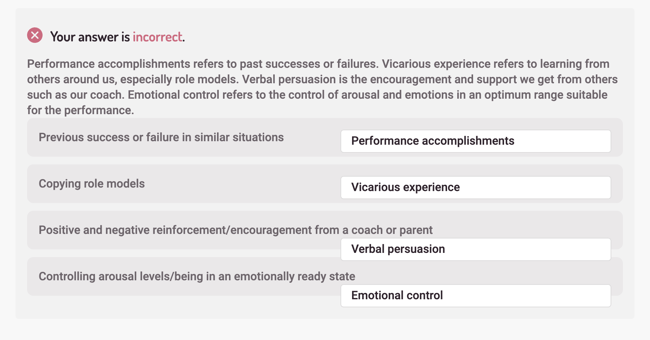 Images taken from the OCR Linear GCE Sport Psychology course on TheEverLearner.com
Images taken from the OCR Linear GCE Sport Psychology course on TheEverLearner.com
Q: What are James's recommendations for OCR A-level PE Paper 3?
My top 5 recommendations for OCR A-level PE Paper 3
🔑 Recommendation 1: Pay very close attention to the commercialisation and media topic.
Of the four exam papers that have been taken so far on this course, three of the four of the ten-markers on Paper 3 have related, at least in part, to commercialisation and the media. Whilst no one can know what the ten-marker will be in 2022, the rhythm is a clear one and students need to be prepared to the fullest on this topic. Students must be confident in:
This is a vast quantity of knowledge and students need to be prepared to answer any of it.
🔑 Recommendation 2: Provide teaching/revision to your learners regarding the impact of technology on general participation.
Whilst your students will also be asked about technology and elite sport, they are more likely to be fluent in that area. With regard to general participation, encourage your learners to incorporate the following:
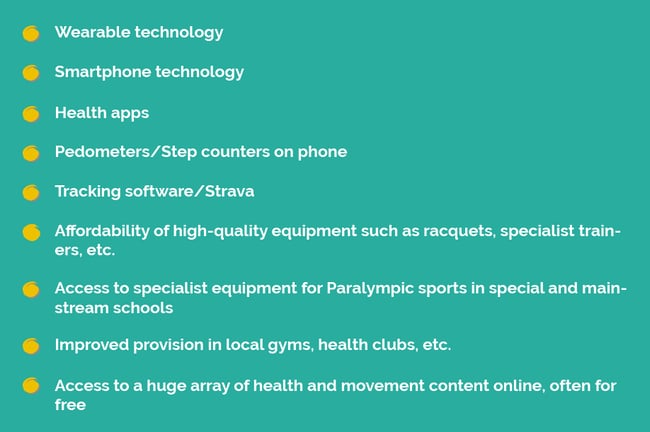
This list is not exhaustive but will give students a good starting point.
🔑 Recommendation 3: Recognise the scale of the emergence and evolution topic.
It is one line in the AEI but this area, a little like commercialisation, is huge! Let’s take pre-industrial sport as our example, students must be able to answer individual questions which focus on any of these subtopics in isolation:- Social class
- Gender
- Law and order
- Education/literacy
- Availability of time
- Availability of money
- Type and availability of transport
Here is an example of my notes on just one of these areas: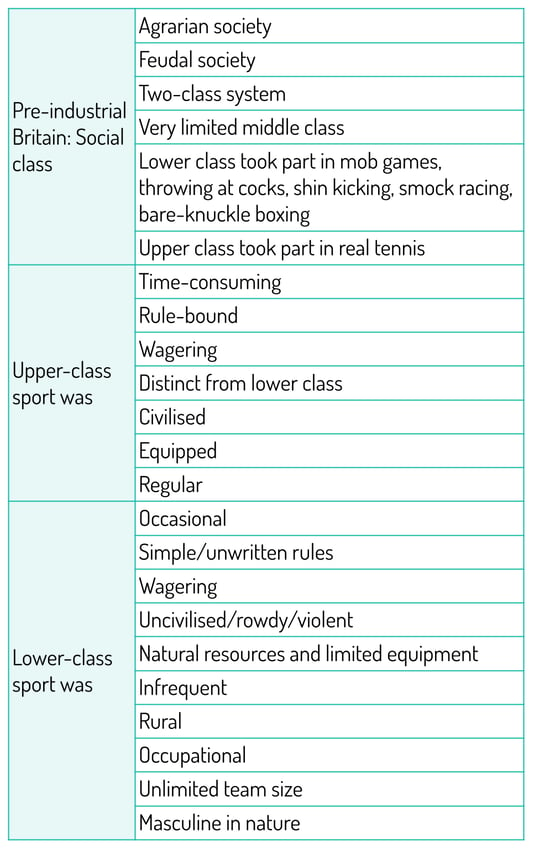
Now consider that there are seven of these subtopics across four different eras. In other words, students have a big job on!
🔑 Recommendation 4: Teach the emergence and evolution section through the concepts of continuity and change.
In other words, make sure your students understand how, say, transport changed over time from pre-industrial Britain to the 21st century. There is a tendency for students to learn the emergence knowledge in isolation but the key to this topic is to understand continuity and change or, what changed and what didn’t. An excellent example is the social class concept again. It is very convenient to ensure that students understand this big picture:
-1.png?width=650&name=OCR_A-Level_PE_Emergence_and_Evolution%20(1)-1.png)
If students understand this in addition to the main characteristics of each period, they are better able to answer an array of questions. The three examples below all require an understanding of continuity and change:

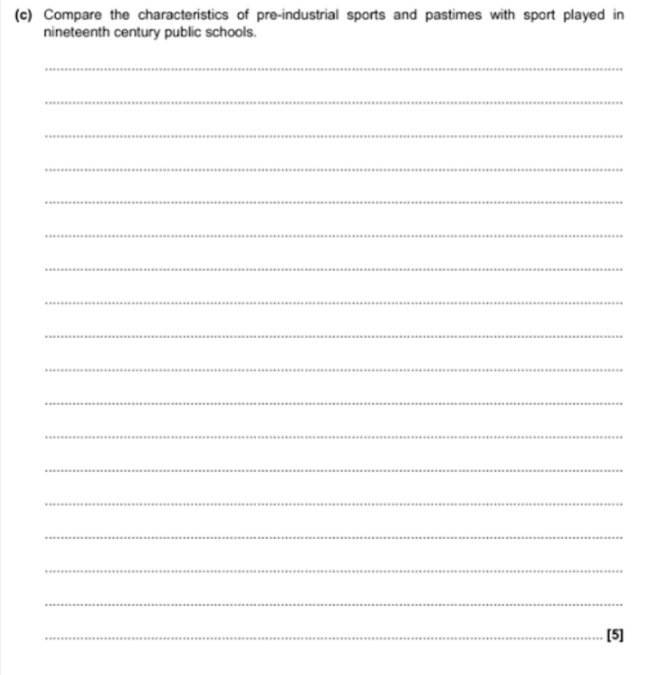
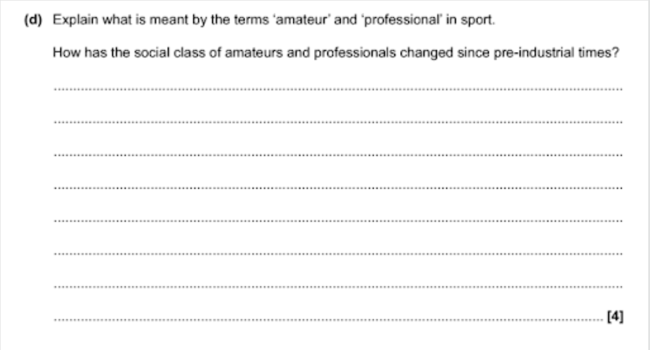
🔑 Recommendation 5: In the Drugs and doping section, ensure students can differentiate between legal supplements and illegal drugs and doping.
I have provided my lesson preparation notes below:

Thank you for reading.
I am available to provide revision experiences for your students. Each year, I contribute ten full days to revision conferences hosted at schools/colleges. As I write this post, three of the ten days are already booked meaning I only have seven further days available. Revision days are finely tuned to the exact requirements of OCR A-level and involve world-class teaching, notes, exam questions, mark schemes and model answers. I also place major emphasis on exam skills not just the content.
Enquire below asap to avoid missing out:
%20Text%20(Violet).png)



